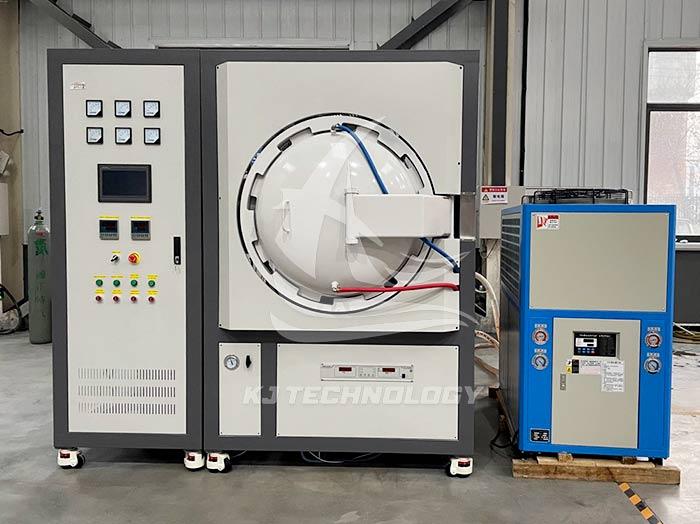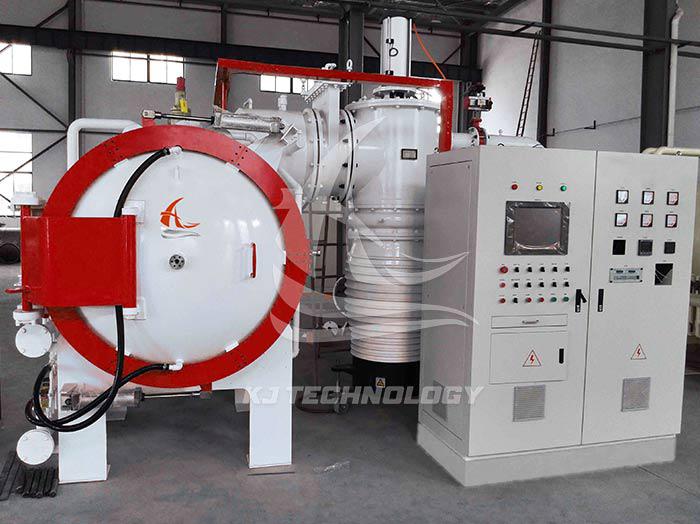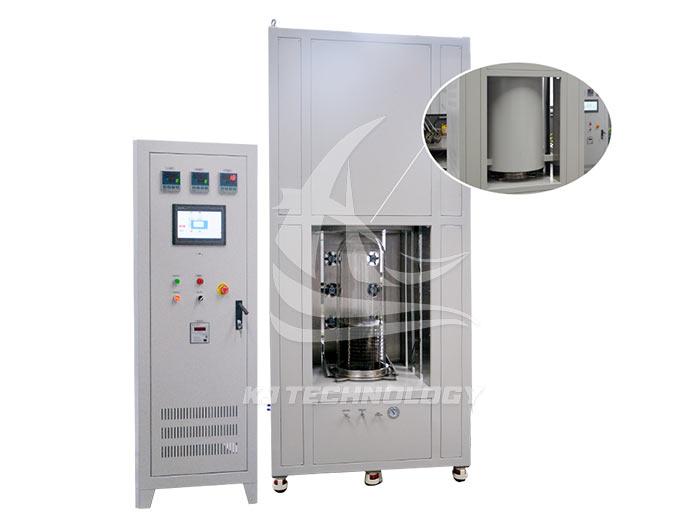Common faults and solutions of vacuum muffle furnace
 08-04-2025 Author: KJ technology
08-04-2025 Author: KJ technology
Common faults and solutions of vacuum muffle furnace
1. Temperature control malfunction
Abnormal temperature (unable to reach the set value or overheating)
reason:
Thermocouples not inserted into the furnace, mismatched or damaged division marks, resulting in temperature feedback distortion.
Solid state relay malfunction, unable to conduct heating circuit normally.
The furnace has poor sealing performance (such as aging sealing strips) and severe heat loss.
Temperature control instrument parameter error or PID adjustment failure.
resolvent:
Check the installation position of the thermocouple to ensure it is inserted into the center of the furnace; Use a multimeter to test the resistance of the thermocouple. If there is an open circuit, replace it.
Detect the input/output voltage of the solid-state relay. If the input is normal but there is no voltage output, the relay needs to be replaced.
Replace the aging sealing strip, clean the residue at the furnace mouth, and ensure that the furnace door is tightly closed.
Re calibrate the temperature control instrument parameters, or reset the PID value after restoring the factory settings.
Large temperature fluctuations
reason:
Heating element aging (such as oxidation and fracture of resistance wire) leads to unstable heating power.
Circulating fan failure, poor airflow in the furnace, and poor temperature uniformity.
The fluctuation of power supply voltage affects the output of heating elements.
resolvent:
Use a multimeter to test the resistance of the heating element. If the resistance is abnormal (such as the cold resistance of a silicon carbide rod should be 5-10 Ω), replace it.
Check if the fan bearings are worn, clean the dust on the fan blades, and replace the fan if necessary.
Install a voltage regulator to ensure that the power supply voltage is stable at the rated value (such as 220V ± 5%).
2. Heating system malfunction
The device cannot start heating or heats up slowly
reason:
Heating element open circuit (such as resistance wire melting, silicon carbide rod breaking).
The power fuse is blown or the circuit is poorly connected.
Solid state relay damage or control circuit malfunction.
resolvent:
After cutting off the power, open the furnace and test the resistance of the heating element with a multimeter. If the resistance is infinite, replace it.
Check if the power fuse is blown, tighten the wiring terminals, and replace the aging circuit.
Detect the input voltage of the solid-state relay (which should be consistent with the output voltage of the controller). If the input is normal but there is no voltage output, replace the relay.
Frequent damage to heating elements
reason:
Overload use (such as prolonged high-temperature operation) accelerates component aging.
Abnormal atmosphere in the furnace (such as containing corrosive gases) can corrode heating elements.
resolvent:
Avoid long-term high load operation and set the temperature rise and fall rate reasonably (such as ≤ 10 ℃/min).
Ensure that the atmosphere inside the furnace is dry and clean, and regularly clean the residue inside the furnace.
3. Vacuum system malfunction
Insufficient vacuum degree
reason:
Vacuum pump failure (such as insufficient oil level, blade wear) leads to a decrease in pumping capacity.
The sealing components of the furnace body are aging (such as O-rings and flange gaskets), resulting in air leakage.
The vacuum gauge is damaged and cannot accurately measure the vacuum degree.
resolvent:
Check the oil level of the vacuum pump, and if it is below the lower limit, add specialized vacuum pump oil; Replace worn blades.
Replace aging seals, tighten flange bolts, and apply vacuum grease to enhance sealing.
Clean the vacuum gauge probe with an alcohol swab, and replace it if it is still abnormal.
The vacuum pump cannot start
reason:
Power failure (such as loose plug, blown fuse).
Vacuum pump motor damage or overload protection triggered.
resolvent:
Check if the power plug is securely plugged in and replace the blown fuse.
Use a multimeter to test the resistance of the motor winding. If the resistance is abnormal, replace the motor; Reset the overload protection switch.
4. Control system malfunction
No display or garbled text on the screen
reason:
Power board malfunction (such as capacitor damage, poor contact).
The screen cable is loose or the display screen is damaged.
System crash or software malfunction.
resolvent:
Check the output voltage of the power board (such as DC 5V), and replace the capacitor or power board if it is abnormal.
Reconnect the screen cable after power failure to ensure a secure connection; If the issue persists, replace the display screen.
Press and hold the reset button to restart the device. If it does not work, upgrade the control system firmware or contact technical personnel to repair the motherboard.
Communication interruption (such as failure to connect to the computer)
reason:
The serial port connection is not connected or has poor contact (such as a loose 9-pin serial port or aviation plug).
Internal circuit failure or software conflict in the controller.
resolvent:
Re plug and unplug the serial port connection to ensure reliable connection; Replace the aging circuit.
Check if the internal power indicator light of the controller is on. If it is off, repair the power circuit; Restart the device or restore factory settings.
5. Mechanical structural failure
The furnace door is stuck or unable to close
reason:
The furnace door hinge is loose or obstructed by foreign objects on the track.
Door magnetic switch malfunction (such as decreased sensor sensitivity).
Failure of safety interlock (such as open circuit of interlock circuit).
resolvent:
Tighten the hinge bolts of the furnace door and clean the track of dust and foreign objects.
Test the output signal of the door magnetic sensor. If it is abnormal, clean the dust in the sensing area or replace the sensor.
Check the wiring of the interlocking circuit to ensure a secure connection; If the circuit is damaged, repair or replace it.
Overheating of furnace body
reason:
Failure of insulation materials (such as detachment or aging of ceramic fiber boards).
The cooling fan is malfunctioning, causing heat accumulation.
resolvent:
Replace aging insulation materials to ensure the sealing of the furnace body.
Check if the fan bearings are worn, clean the dust on the fan blades, and replace the fan if necessary.








